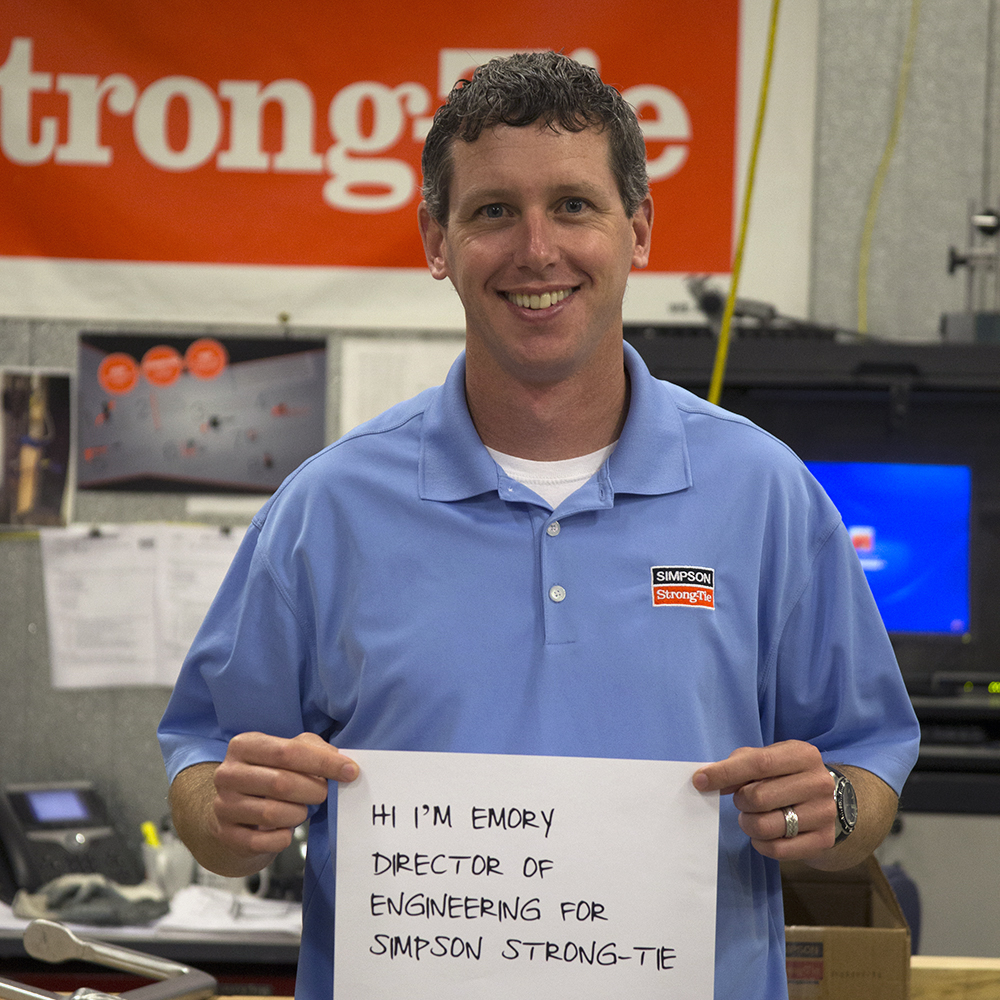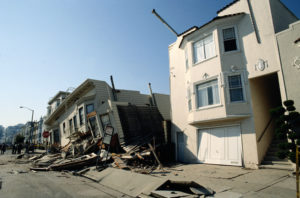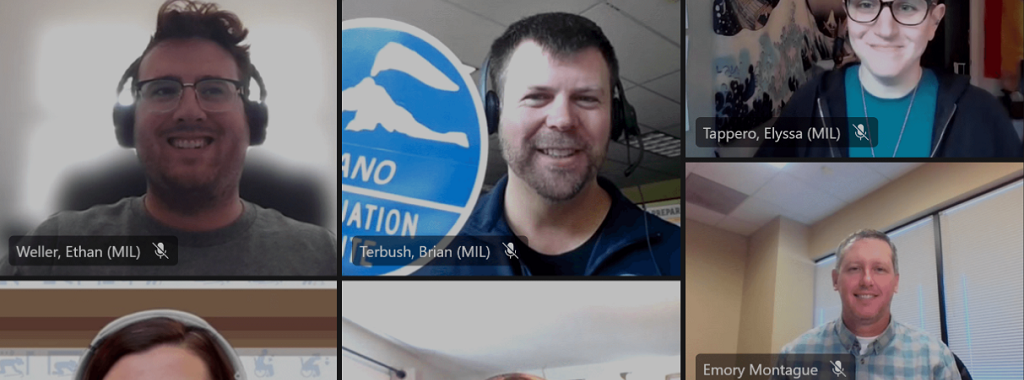Simpson Strong-Tie was excited to join the annual Reddit AMA event hosted by experts in the Pacific Northwest last week to bring awareness to the International ShakeOut Day happening on October 19, 2023. This worldwide occasion sees millions participating in earthquake drills at work, school or home, emphasizing earthquake safety with the “Drop, cover & hold on!” practice. Our panel consisted of scientists and preparedness experts from government agencies in Washington and Oregon. They focused on addressing inquiries related to earthquakes, tsunamis, the ShakeOut drills and general preparedness, covering both structural and nonstructural aspects, including ShakeAlert Earthquake Early Warning activities in the Pacific Northwest.
Tag: great shakeout
Drop, Cover, and Hold On – Becoming Earthquake-Smart in the 2017 Great ShakeOut
This week’s post was written by Jacob McAuley, Associate Regional Marketing Manager at Simpson Strong-Tie.
Every October, millions of people across the globe participate in earthquake drills as part of an event called the Great ShakeOut in order to improve their earthquake preparedness. This year, the Great ShakeOut took place on October 19 and involved more than 60 countries. In addition to the earthquake drill, participants in the event often take part in other activities such as seminars, Q&As and more. At Simpson Strong-Tie, we practiced earthquake drills at each of our major branches, and, in our Pacific Northwest region, we were part of a Reddit Ask Me Anything event (an online live Q&A) to talk about earthquake safety and answer people’s questions. Below, I discuss our participation in both of these activities.
Continue Reading
Great ShakeOut Earthquake Drill 2016
The Great ShakeOut Earthquake Drill is an annual opportunity for people in homes, schools and organizations to practice what to do during earthquakes and improve their preparedness. In a post I wrote last October about the Great ShakeOut, I reminisced about the first earthquake I had to stop, drop and cover for – the Livermore earthquake in January, 1980. This year got me thinking about how our evacuation drills work.
At Simpson Strong-Tie, we use the annual Great ShakeOut drill to practice our building evacuation procedures. Evacuation drills are simple in concept – alarms go off and you exit the building. We have volunteer safety wardens in different departments who confirm that everyone actually leaves their offices. There are always a few people who want to stay inside and finish up a blog post. Once the building is empty and we have all met up in the designated meeting area, we do a roll call and wait for the all-clear to get back to work.
Several years ago the alarms went off. While waiting for the drill to end, we were concerned to see fire fighters arrive and rush into the building. Realizing this was not a drill, there were some tense moments of waiting. The fire chief and our president eventually walked out of the building and our president was yelling for one of our engineers. Turns out the engineer (who shall remain nameless) was cooking a chicken for lunch. Yes, a whole chicken. The chicken didn’t make it – I’m not sure what the guilty engineer had for lunch afterwards. At least we received extra evacuation practice that year. We aren’t allowed to cook whole chickens in the kitchen anymore.
Simpson Strong-Tie is helping increase awareness about earthquake safety and encouraging our customers to participate in the Great ShakeOut, which takes place next Thursday on October 20. It’s the largest earthquake drill in the world. More than 43 million people around the world have already registered on the site.
On October 20, from noon to 2:00 p.m. (PST), earthquake preparedness experts from the Washington Emergency Management Division and FEMA will join scientists with the Washington Department of Natural Resources and the Pacific Northwest Seismic Network for a Reddit Ask Me Anything – an online Q&A. Our very own Emory Montague will be answering questions. The public is invited to ask questions here. (Just remember that this thread opens the day before the event and not sooner.)

We’re also providing resources on how to retrofit homes and buildings, and have information for engineers here and for homeowners here.
Earthquake risk is not just a California issue. According to the USGS, structures in 42 of 50 states are at risk for seismic damage. As many of you know, we have done a considerable amount of earthquake research, and are committed to helping our customers build safer, stronger homes and buildings. We continue to conduct extensive testing at our state-of-the-art Tye Gilb lab in Stockton, California. We have also worked with the City of San Francisco to offer education and retrofit solutions to address their mandatory soft-story building retrofit ordinance and have created a section on our website to give building owners and engineers information to help them meet the requirements of the ordinance.
Last year, Tim Kaucher, our Southwestern regional Engineering Manager, wrote about the City of Los Angeles’s Seismic Safety Plan in this post. Since that time, the City of Los Angeles has put that plan into action by adopting mandatory retrofit ordinances for both soft-story buildings and non-ductile concrete buildings. Fortunately, California has not had a damaging earthquake for some time now. As a structural engineer, I find it encouraging to see government policy makers resist complacency and enact laws to promote public safety.
Participating in the Great ShakeOut Earthquake Drill is a small thing we can all do to make ourselves more prepared for an earthquake. If your office hasn’t signed up for the Great ShakeOut Earthquake Drill, we encourage you to visit shakeout.org and do so now.
Great ShakeOut Earthquake Drill
They say you never forget your first love. Well, I remember my first earthquake, too. My elementary school had earthquake and fire drills often, but the Livermore Earthquake in January, 1980 was the first time we had to drop and cover during an actual earthquake. The earthquake occurred along the Greenville fault and over 20 years later, I was the project engineer for an event center not far from this fault. I don’t think that earthquake that led me on the path to become a structural engineer. I was only seven and was more focused on basketball and Atari games than future fields of study.
My favorite part about the Livermore Earthquake was the 9-day sleepover we managed to negotiate with my parents. I have a big family, so we had a large, sturdy dinner table. My brother Neil and I convinced my parents it would be better if we slept under the table, in case there was an aftershock. And, of course, we should invite our friends, the Stevensons, to sleepover because they don’t have as large a dinner table to sleep under at their house. And it worked! In our defense, there were a lot of aftershocks and an additional earthquake a few days later.
Each year, an earthquake preparedness event known as the Great ShakeOut Earthquake Drill takes place around the globe. The event provides an opportunity for people in homes, schools, businesses and other organizations to practice what to do during earthquakes.
Simpson Strong-Tie is helping increase awareness about earthquake safety and encouraging our customers to participate in the Great ShakeOut, which takes place next Thursday on October 15. It’s the largest earthquake drill in the world. More than 39 million people around the world have already registered on the site.
We’re also providing resources on how to retrofit homes and buildings, and have information for engineers at strongtie.com/softstory and for homeowners at safestronghome.com/earthquake.
Earthquake risk is not just a California issue. According to the USGS, structures in 42 of 50 states are at risk for seismic damage. As many of you know, we have done a considerable amount of earthquake research, and are committed to helping our customers build safer, stronger homes and buildings. We continue to conduct extensive testing at our state-of-the-art Tye Gilb lab in Stockton, California, and next Wednesday, we’ll be performing a multi-story wall shake table test for a group of building officials at our lab. We are also working with the City of San Francisco to offer education and retrofit solutions to address their mandatory soft-story building retrofit ordinance and have created a section on our website to give building owners and engineers information to help them meet the requirements of the ordinance.

Our research is often in conjunction with academia. In 2009, we partnered with Colorado State University to help lead the world’s largest earthquake shake table test in Japan, demonstrating that mid-rise wood-frame buildings can be designed and built to withstand major earthquakes.
Earthquake articles like the one from The New Yorker also remind us how important it is to retrofit homes and buildings and to make sure homes, businesses, families and coworkers are prepared.
Like others in our industry, structural engineers play a role in increasing awareness about earthquake safety. We’d like to hear your thoughts about designing and retrofitting buildings to be earthquake resilient. Let us know in the comments below. And if your office hasn’t signed up for the Great ShakeOut Earthquake Drill, we encourage you to do so by visiting shakeout.org.
October 11 – Buildings At Risk: Earthquake Loss Reduction Summit
I don’t travel too much for work, so the last three weeks has been a bit different from my normal routine. On August 30, I attended an unreinforced masonry retrofit workshop in Memphis, had a sales meeting the following week in St. Louis, and the annual SEAOC convention last week in Santa Fe, New Mexico.
I have been remiss in not talking about an important summit taking place in California next month. SEAOSC is hosting the 2nd annual Buildings at Risk Earthquake Loss Reduction Summit on October 11 in downtown Los Angeles, California. The summit is a precursor to the “Great California ShakeOut” event that will be held on October 18.The summit will serve as a forum to not only increase awareness of seismic risk, but spur action. This will be an important conference not only for structural engineers working in seismic areas, but for building officials, architects, building owners, insurance companies, and first responders. The sessions will stress the benefits of mitigation and encourage the different stakeholders to work together on solutions.
Early registration for a discounted rate and a chance to win an iPad ends today, but there is still time to register.
– Paul

